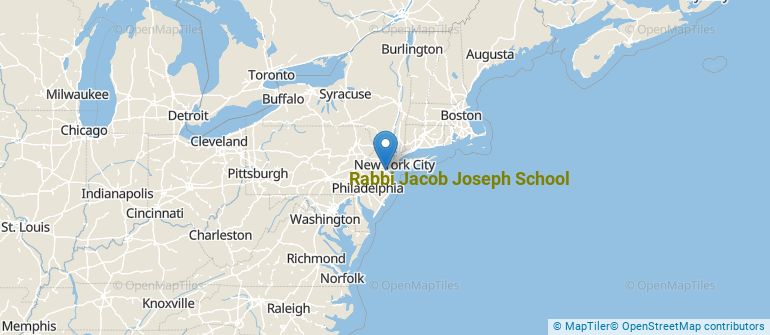 by our College Data Analytics Team
by our College Data Analytics TeamExplore the best ranked schools for the programs you are most interested in.
Rabbi Jacob Joseph School was not ranked in College Factual's 2025 Best Overall Colleges report. This could be for a number of reasons, including lack of data.
The acceptance rate at Rabbi Jacob Joseph School is 73%. That's higher than the rate at many schools, but still low enough to be considered somewhat selective. If you want to get in, you'll need good grades and to be able to show that Rabbi Jacob Joseph School is a good fit for you.
The student to faculty ratio at Rabbi Jacob Joseph School is about average at 16 to 1. This ratio is often used to gauge how many students might be in an average class and how much time professors will have to spend with their students on an individual level. The national average for this metric is 15 to 1.
The freshmen retention rate of 82% tells us that most first-year, full-time students like Rabbi Jacob Joseph School enough to come back for another year. This is a fair bit higher than the national average of 68%. That's certainly something to check off in the good column about the school.
During the 2017-2018 academic year, there were 73 full-time undergraduates at Rabbi Jacob Joseph School.
The net price is calculated by adding tuition, room, board and other costs and subtracting financial aid.Note that the net price is typically less than the published for a school. For more information on the sticker price of Rabbi Jacob Joseph School, see our tuition and fees and room and board pages.
Get more details about the location of Rabbi Jacob Joseph School.

Contact details for Rabbi Jacob Joseph School are given below.
| Contact Details | |
|---|---|
| Address: | One Plainfield Ave, Edison, NJ 08817-4494 |
| Phone: | 732-985-6533 |
| Website: | https://rabbijacobjoseph.com/ |
| Most Popular Majors | Bachelor’s Degrees | Average Salary of Graduates |
|---|---|---|
| Religious Studies | 2 | NA |
Footnotes
*The racial-ethnic minorities count is calculated by taking the total number of students and subtracting white students, international students, and students whose race/ethnicity was unknown. This number is then divided by the total number of students at the school to obtain the racial-ethnic minorities percentage.
References
More about our data sources and methodologies.